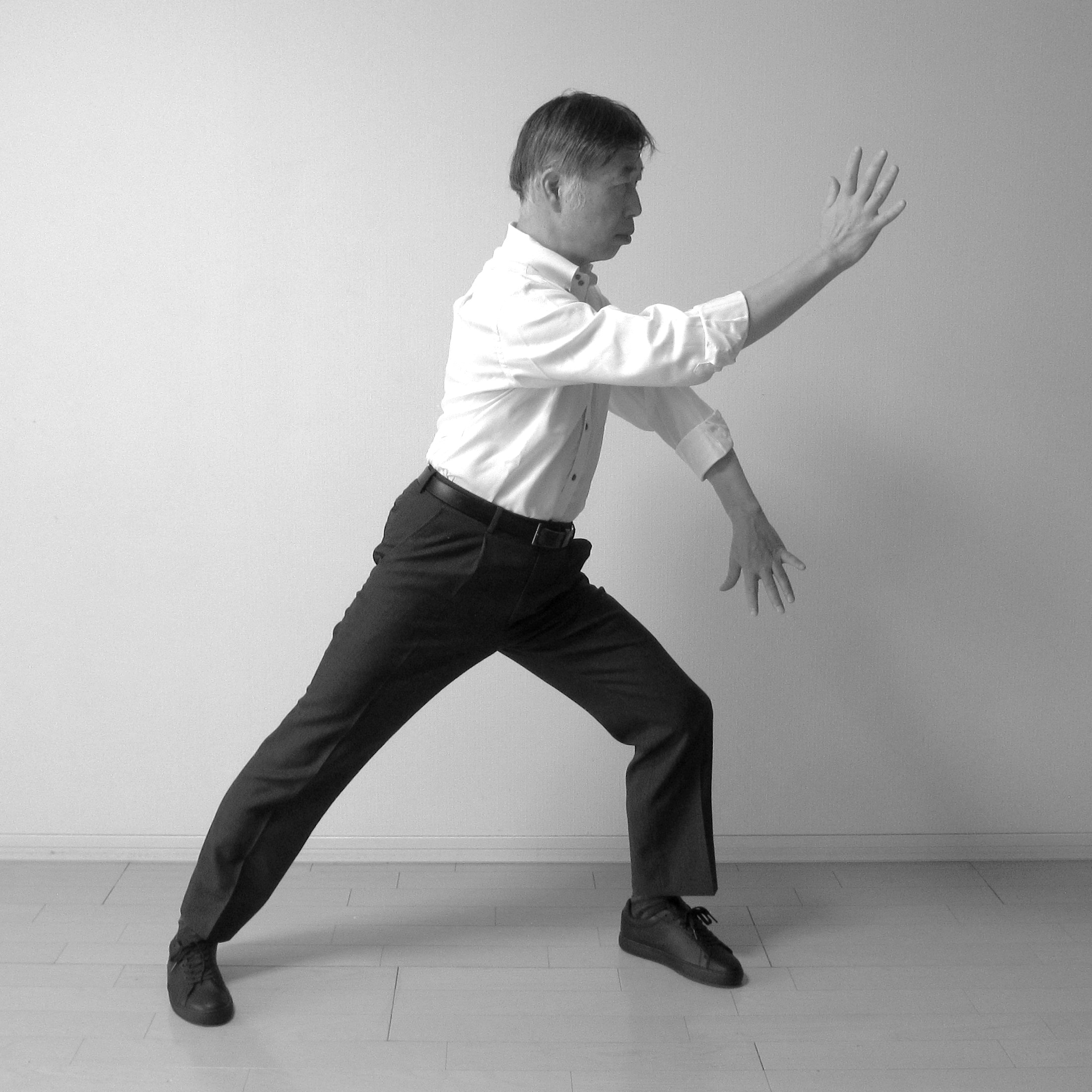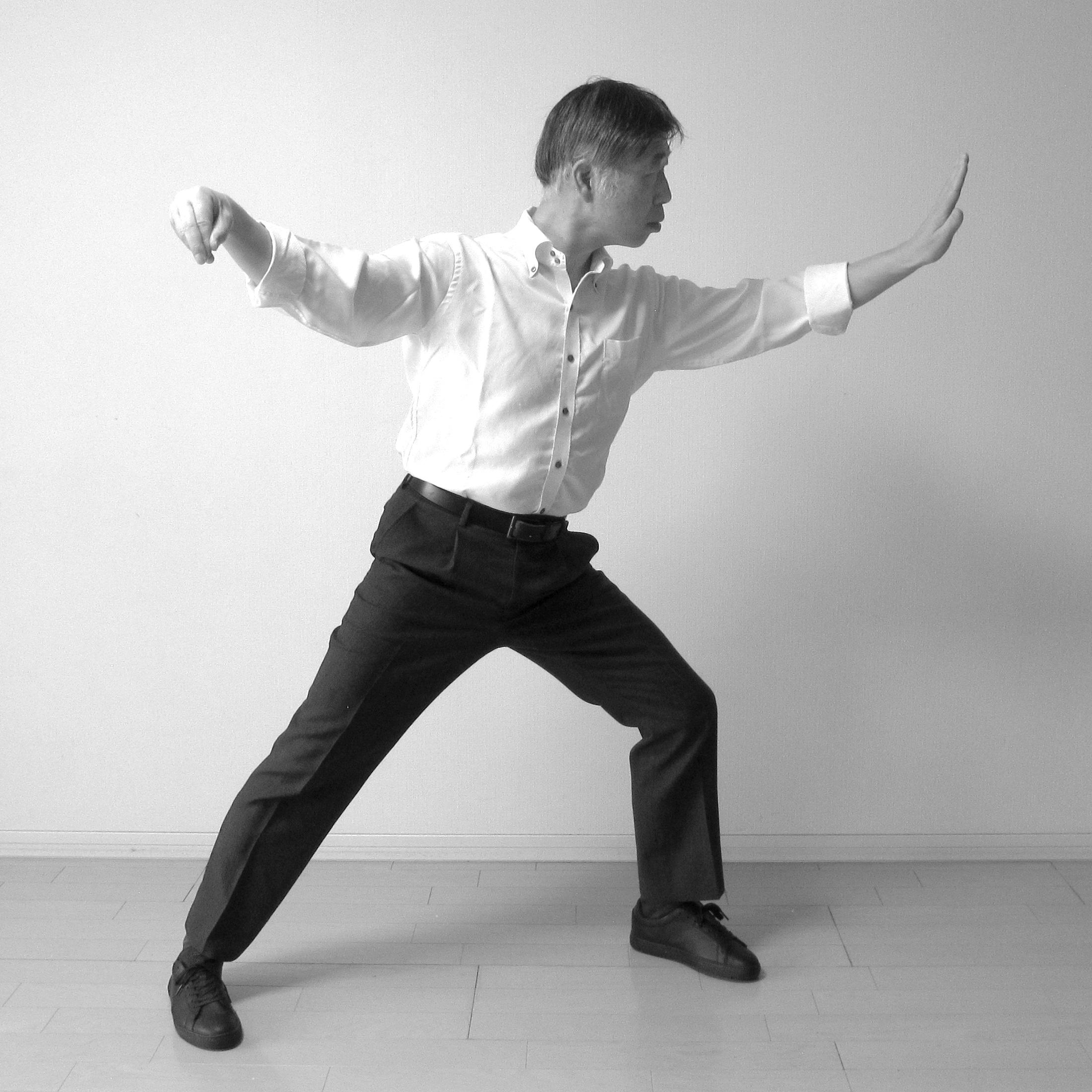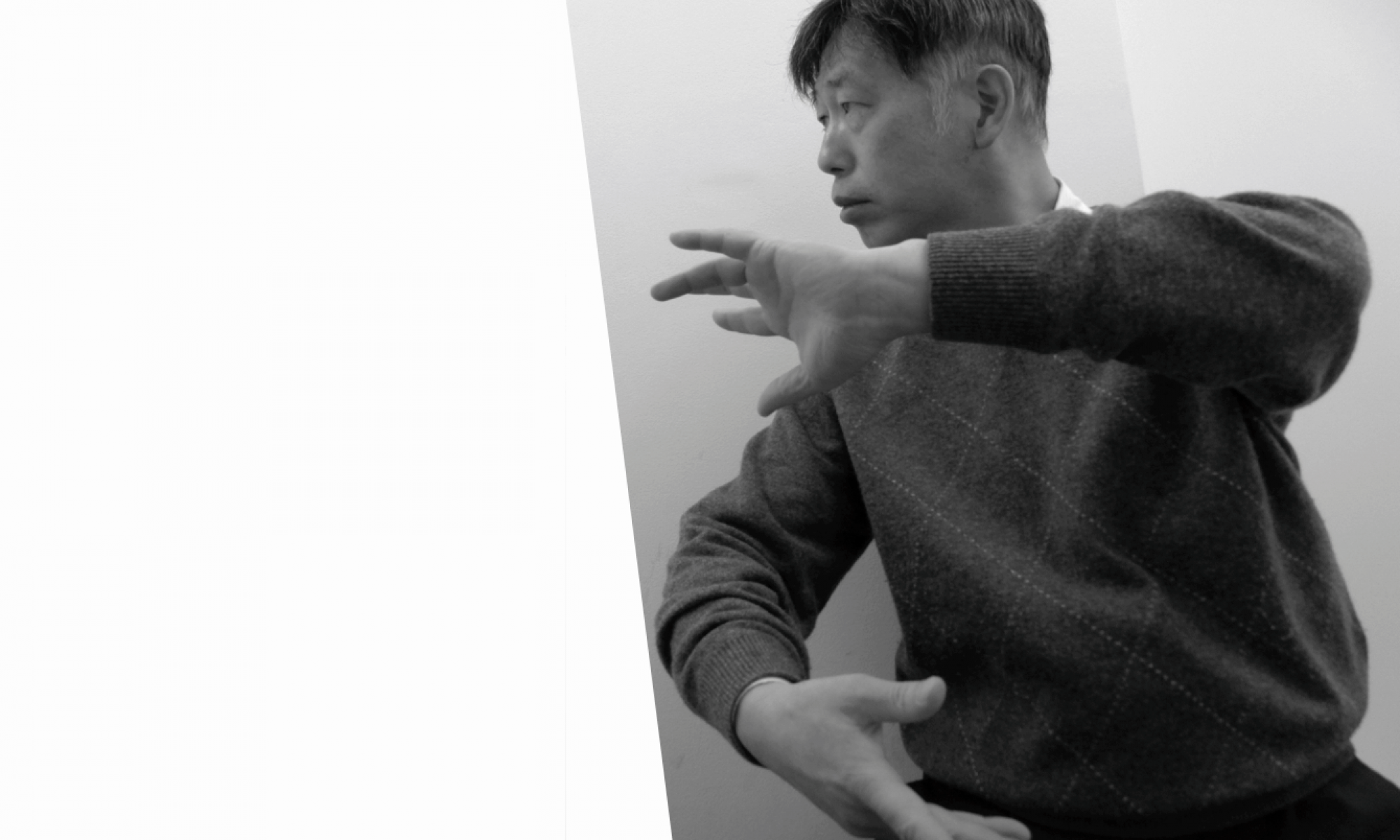
Tai Chi is the northern style of Chinese martial arts, and bow stance is fundamentally used for strikes and punches.
Most parts of the Tai Chi forms (套路) are repetitions of this bow stance.
If you did not master the bow stance, you could not defeat people with Tai Chi’s palm strike.
Let’s explain.
Bow stance was originally called Bow-Arrow stance (弓箭步).
However, today I think just bow stance is more common.
The origin of the name is not clear.
Was it a stance for shooting a short arrow?
Or maybe it’s because the front leg bends like a bow and the back is straight like arrow?
Bow stance could not be explained at one time.
This time, I would like to focus on the standing position and posture.
In order to learn the correct bow stance, it is important that you’ve got an image of a foot position clearly.
First, you should imagine a straight line indicating the direction of force on the floor or ground.
Put your rear leg heel on the line and open your toes at 45 degrees.
For the forefoot, place the thumb toe on the line and align at 45 degrees.

The front leg is weighted under tension with the hip joint opened (external hip joint rotation).
The rear leg stands on the ground with the knee extended straight.
It is the sacrum, which is controlling these positions.
The sacrum should be in parallel to the line as much as possible.
The weight should be 70% on the front leg and 30% on the rear leg.
The front leg acts as a stopper for the weight transportation.
The kneecap could not come out from the toes.
The rear leg is the axis that transmits the energy from the ground to the striking point.
Tai Chi bow stance is based on the rear hip rotating externally.
Whether it is a palm or a fist, the point of hitting is on this line.
The tip of the hitting point, the tip of the nose, and the front leg thumb toe must be on the line.
This is called “Three tips align with each other (三尖相照)”.
“Three tips align with each other” is a traditional teaching, and it is an essential principle in learning bow stance.
If you had not experienced these structures with understanding the principle, you could not have said that you mastered bow stance.
In other words, you could not strike a powerful punch.
You should take the same stance alignment when you strike in same-side-step called “Shunbu (順步)” and twist-step called “Aobu (拗步)”.
As an example of same-side-step, see the photo of Single Whip.
As an example of twist-step, see the photo of Fair Lady Shuttles.
Both have the same foot position on the same line.
This is a principle of kinetics, and Tai Chi has also inherited the tradition of “Three tips align with each other”.


